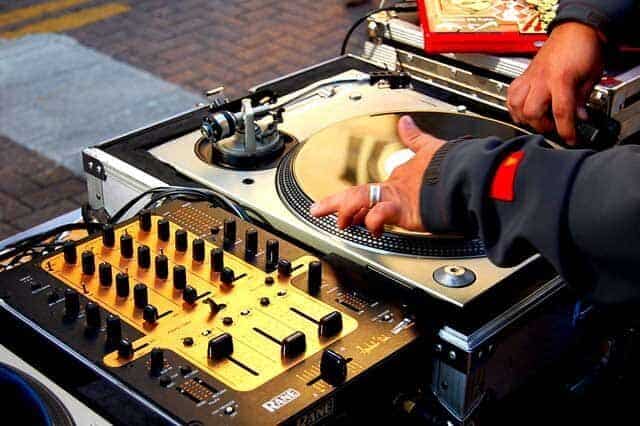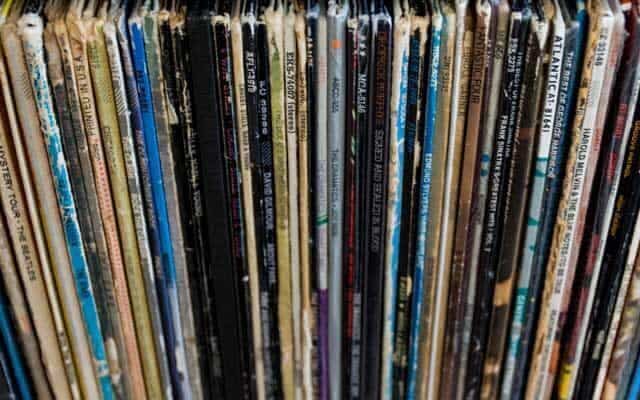Music Samples Through Time. What’s a sample? It’s a sound, a hook, a vocal, perhaps an entire melody taken from one song and transplanted into a newer work. Sampling is entirely legal in the music industry. And as it turns out, very common. Look no further than the Billboard Top 100 for evidence. In the last six years, four of the biggest year-ending songs have used samples: “Shape of You” (2017) by Ed Sheeran; “Uptown Funk” (2015) by Mark Ronson/Bruno Mars; “Thrift Shop” (2013) by Macklemore; “Somebody That I Used to Know” (2012) by Gotye.
That’s not to say sampling is an invention. In fact, the practice can be traced back to the early 1900s.
Music Samples Through Time, an initiative between Currys PC World and the Bose SoundLink Micro speaker, crunches the numbers by decade, over more than a century, to form a complete picture of this artform.

The data deep-dive looks at two things:
- The number of songs that use samples (here, there’s an unsurprising weighting towards more recent decades as sampling grows in popularity).
- The number of songs that were sampled
The results are fascinating. Here’s what the data is saying.
The 1990s were a golden age
35% of all music to use a sample came out in the ‘90s.
This was a period when producers and artists teamed up to mix, match, cut and drop disparate sounds into the mixing bowl, then gel it all together with no shortage of creativity. Songs that emphasised this freewheeling yet calculated attitude include:
- “Nuthin’ but a ‘G’ Thang” (1992) by Dre and Snoop Dogg (which uses 6 samples)
- “How I Could Just Kill a Man” (1991) by Cypress Hill (which uses 7 samples)
It wasn’t just hip hop either.
- “Da Funk” by Daft Punk (1995) uses samples from three sources: Barry White, Vaughan Mason and Crew, and The Hollywood Edge Sound Effects Library.
Technology, creativity and musical spirit were all the right match in the ‘90s. Music equipment was becoming ever cheaper to buy, and the act of producing music was democratised. In turn, the idea that a musician had to be somebody that could sing or play a musical instrument was upended.
But how did sampling start?
The practice can be traced back to the 1910s when cutting up and splicing new sounds into music was very much a physical endeavour, as opposed to the mouse clicks we can get away with today.
We had Musique Concrète in the 1940s
Musique Concrète was a musical movement spearhead by two men: Pierre Schaeffer and Pierre Henry.
Both Schaeffer and Henry wanted to interrogate what music meant. Was it solely the domain of musical instruments?
- The pair experimented with cutting and transplanting “real-life” sounds into their tracks. The swish of a canal boat, a chuntering train, a rattling saucepan were all fair game.
- In effect? Both Schaeffer and Henry were experimenting with an early kind of sampling.
Bob Marley and other reggae musicians sampled a great deal. Bob Marley was a fan of gospel group The Impressions and used their work in “Keep on Moving” (1971) and “One Love/People Get Ready” (1977).
o As an aside, Marley notably sampled Bob Dylan’s “Like a Rolling Stone” (1965) for his 1966 track “Rolling Stone”.
Other reggae artists followed suit. Desmond Dekker’s “Live and Learn” (1971) features five samples throughout the 3-minute track, two of which are of Dekker’s earlier work.
Ultimately, reggae and sampling went hand in hand in the 1970s. In 1973, over one-hundred reggae songs used samples, the first time any genre had hit this mark in a year.
In the ‘80s, sampling became firmly the domain of hip hop, rap and R&B . Hip hop and its offshoots, rap and R&B, changed the game. To date, these genres account for 64% of all samples ever used (177,167 of 278,090 tracks).
The quintessential example of a rap group that embraced sampling in the ‘80s? Look no further than Run-D.M.C.
The Queens, NYC rap group formed in 1981 and to date has left an indelible mark on the music business at large.
So indelible, in fact, they were inducted into the Rock and Roll Hall of Fame in 2009 – only the second hip hop/rap group to receive the honour.
Tracks like the 1988 hit “Beats to the Rhyme” used a mind-boggling 12 samples, while the catchy “It’s Tricky” used the riff from “My Sharona” by The Knack (1979) to hook listeners in, updating the sound with that distinctive Run-D.M.C. edge.
Right, let’s change direction and look at sampling in its entirety, starting with observable trends.
- From 1970 to 1979, 2926 tracks used a sample
- From 1980 to 1989 that number rose 23925
- As we’ve seen, it rose precipitously during the ‘90s, with 97190 songs using samples during the decade
- A decline in the 2000s (74051 tracks) has been countered by a return to popularity in the 2010s (78577 and counting).

What’s been popular with producers/artists?
Producers – be it hip hop supremoes, rock musicians, pop crooners and everything in between – are most likely to use songs from the ‘70s. Across one-hundred years of sampling, the sounds of the ‘70s have been used more than any other decade. 1972, 1972 and 1974 lead the popularity stakes, in that order.
‘70s Soul/Funk/Disco is fertile ground – and James Brown is king. Soul/funk/disco, sounds characteristic of the bell-bottom decade, are popular with producers. A staggering 91,221 of these songs – which were predominantly made in the 1970s – have been sliced up and added to later works.
That dovetails with another fact we know: ’70s crooner James Brown is the most sampled artist of all time. Brown made his name in the funk and soul space and his sound can be found in songs by Kendrick Lamar, Kanye West, Dre, Justin Timberlake, Jay-Z, The Notorious B.I.G., Wu-Tang Clan, Gramatik, Public Enemy, Aphex Twin and Mac MIller to name just a few. In all, Brown’s work has been used an incredible 7252 times.*
Did you know?
Sampling throws up dozens of little-known stories that enliven the songs you thought you knew.
- Britney Spears’ “Toxic” samples a Bollywood track called “Good Sign Bad Sign” to achieve its distinctive bat-swoon-riff. As it happens, “Good Sign Bad Sign” was written by none other than Monty Norman, the man responsible for the “James Bond Theme”. More than that, Norman actually used “Good Sign Bad Sign” as a springboard for the Bond track.
- The catchy hook that runs throughout Gotye’s “Somebody That I Used to Know” is based almost entirely on “Seville” (1967) by Luiz Bonfá.
- “Shape of You”, Ed Sheeran’s smash hit track, samples “No Scrubs” (1999) by TLC.
- Mountain’s “Long Red” (1971) is, to date, the most sampled rock song of all time, used by everyone from Lana Del Rey to Jay Z and even Justin Bieber.
- If the 90s is the halcyon era of sampling, as we believe it, look no further than DJ Shadow’s album “Endtroducing”. The entire thirteen-track record is almost entirely made up of samples.
*All stats accurate up to 9 October 2018.
Link: https://techtalk.currys.co.uk/audio/speakers/music-samples-through-time/

